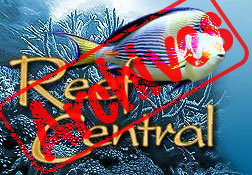

|
|
|
#1
|
|||
|
|||
|
flame angels
I have a friend with two flame angels he believes are a pair. Any particular behavior I might watch for to confirm this? I don't think he will give them up but I could possibly collect eggs by placing a plankton screen under the tanks overflow. I believe they are pelagic spawners, right? They are in a sixty pretty much by themselves. I know there was a FAMA article not too long ago, I will find it. Also will check Breeders Registry. Any other good info out there? - D
|
|
#2
|
|||
|
|||
|
If they are a pair and spawning... If the tank has white and actinic lights on timers with the actinic staying on 30 minutes past the whites...
Observe the tank just as the whites turn off (dusk)... You should see the pair start to dance and spiral up towards the surface. When they reach the surface, they will release the egss and sperm. It happens very fast...so don't blink 
__________________
Biology is the only science in which multiplication means the same thing as division. |
|
#3
|
|||
|
|||
|
I would think that if they are not beating the crap out of each other, then they are a pair. If the flow through the screen is too strong, then it is a good possibility that the eggs will get mangled.
|
|
#4
|
|||
|
|||
|
Hi David
If you get the eggs, you will need a tumbler and very small copepod nauplii as first food. Read that FAMA article and then read it again. Then see if you can find someone that knows the species of the copepod and then find someone that can get you some. If you thought H. reidi was fun... |
|
#5
|
|||
|
|||
|
Actually John I was just going to collect the eggs and let YOU try to raise them

|
|
#6
|
|||
|
|||
|
ROLFLMAO!

|
|
#7
|
|||
|
|||
|
Oama, so how did you acquire your copepods?
|
|
#8
|
|||
|
|||
|
Location Location Location
 Hawaii Inst. of Marine Biology is located on a small island in the middle of Kaneohe Bay, Oahu, Hawaii. We would take out a 13ft whaler and tow a plankton net for a couple 100 yards and bring the "catch" back to the lab. We would then use sieves to get the right size. The hauls were always loaded with copepods naups. Sigh... I miss those days 
__________________
Biology is the only science in which multiplication means the same thing as division. |
|
#9
|
|||
|
|||
|
Yes I have read about the Kanohe Bay and the marine center. And yes there are the bestiolina and parvocalanus copepods there. But dont you have connections to get someone to ship you some plankton tows? I tried contacting a student there that participated in a study on the exact things I was looking for. But, they were working on their dissertation and no longer doing plankton tows. They were too busy. So I failed. But parvocalanus crassirostris is also found in Florida Bay- Ever go fishing?
|
|
#10
|
|||
|
|||
|
I'm always looking for a good excuse to go fishing
 I can also check with Harbor Branch Oceanographic or even the Smithsonian lab here in Ft. Pierce.
__________________
Biology is the only science in which multiplication means the same thing as division. |
|
#11
|
|||
|
|||
  Thank you Oama and please, please, please. Thank you Oama and please, please, please.
|
|
#12
|
|||
|
|||
|
|
|
#13
|
|||
|
|||
|
broken link
__________________
Biology is the only science in which multiplication means the same thing as division. |
|
#14
|
|||
|
|||
|
one more try
Mesocosm Studies of Florida Bay Plankton Sorry for the initial screwed up link.
|
|
|